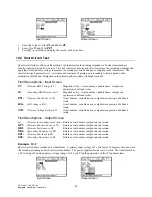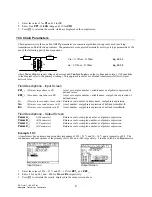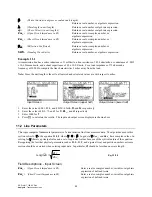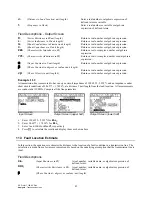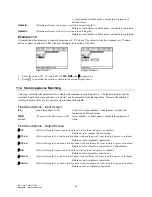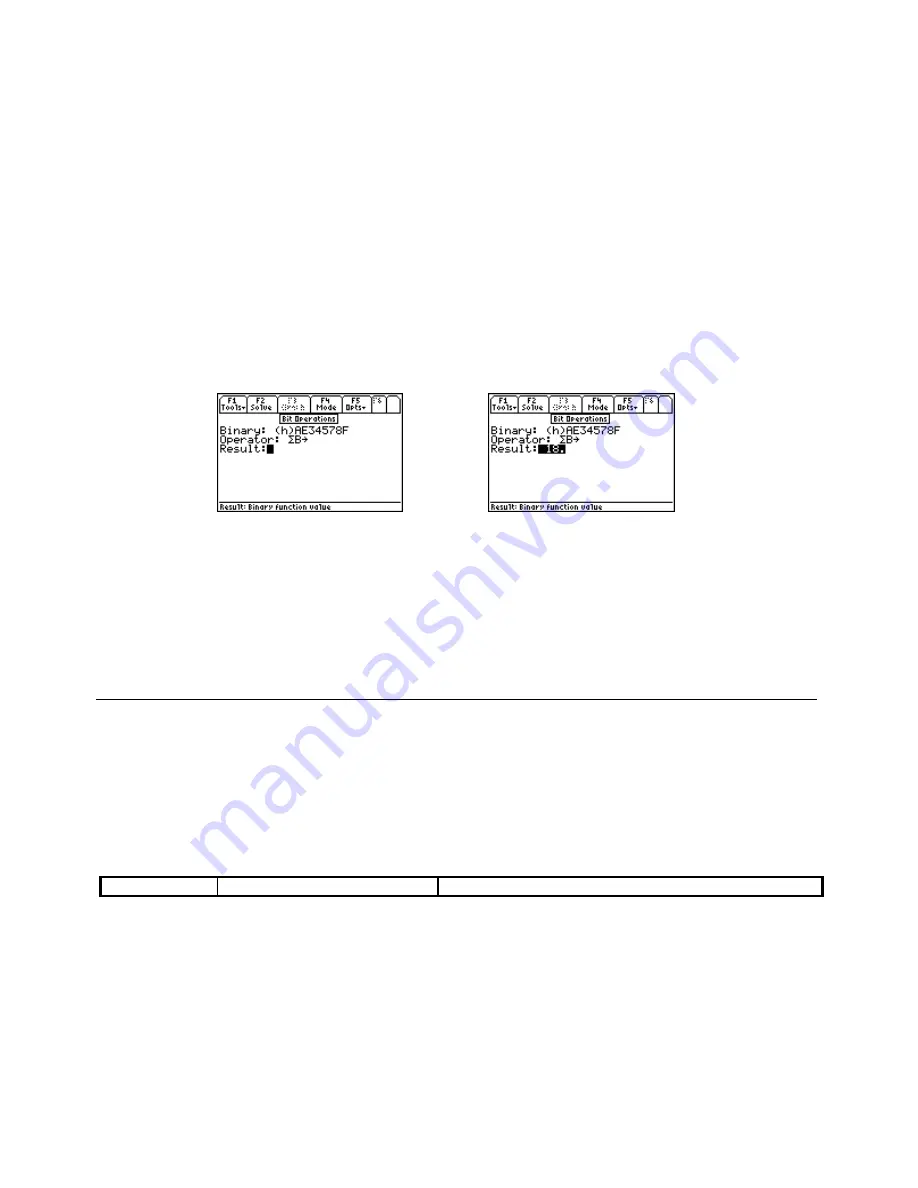
EE Pro for TI-89, 92 Plus
Analysis - Computer Engineering
53
Operator
:
(Binary Operation) Press
¸
or
B
to select.
Note: All bit operations affect the carry flag only.
SB
Sets the bit in the specified position.
CB
Clears the bit in the specified position.
B?
Tests the bit in the specified position.
Σ
B
Returns the number of bits set.
Result:
(Binary Function Value)
Returns an integer result using the number base set in
†
/Binary Mode
.
Example 12.4
Find the bit sum of the a hexadecimal number AE34578F which is 32 bits wide.
Input Screen
Output Screen
1. Use
†
key to select hexadecimal for
Base:
for data type and 32 bits for
Word size
; press
¸
to accept
the choices made.
2. Enter AE34578F for the Binary number.
3. Choose
Σ
B for the
Operator.
Press
„
to compute the result. The screen displays above show the input and
the resulting output.
12.5 Binary Conversions
This topic demonstrates the process of converting real numbers to binary numbers and vice versa. The software
allows for the conversion of real numbers to the IEEE format. In 1985, the Institute of Electrical and Electronic
Engineers (IEEE), a professional association, developed standards for Binary Floating Point Arithmetic. This
Standard (referred to Standard 754), specifies two basic forms of floating-point formats: single and double precision.
The single precision format has 23 bits (23-bit significands), and 32 bits overall. In EE
•
Pro the computed output is
in the single floating-point format. Binary entries in IEEE format are justified to the right with the last binary entry
appearing in the 0 bit.
31 30 29 28 27 26 25 24 23 22 21 20 19 18 17 16 15 14 13 12 11 10 9 8 7 6 5 4 3 2 1 0
sign (1 bit [31])
base 2 exponent (8 bit [23-30])
mantissa (23 bit floating point [0-22])
Field Descriptions
Binary
:
(Input Field for B
→
R16C and IEEE
→
)
Enter an integer in the number base
designated in
†
/Binary Mode
or
an
integer preceded by the number base in
parenthesis (b, d, o, or h).


